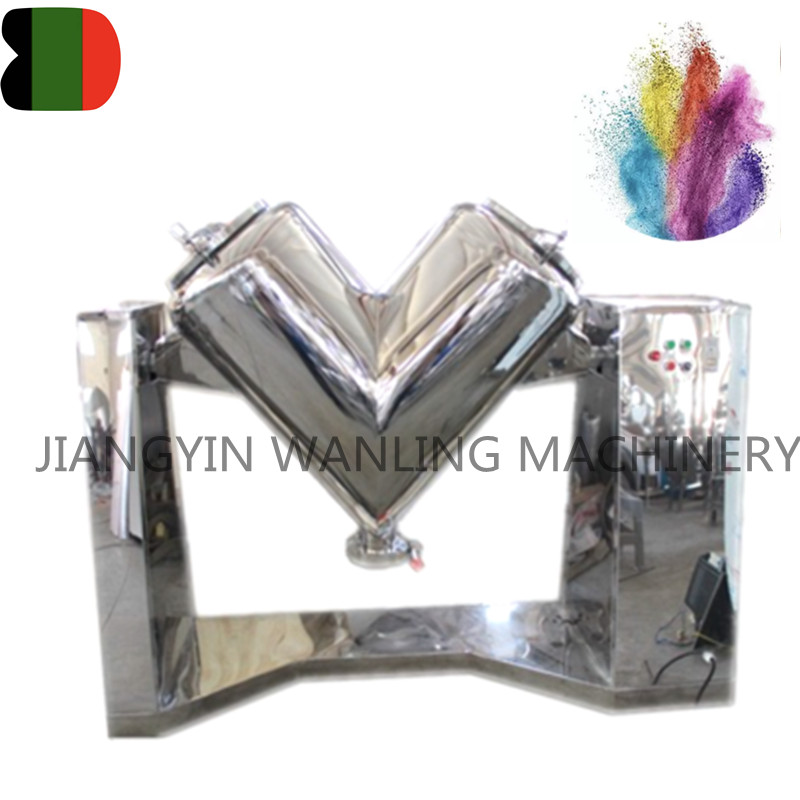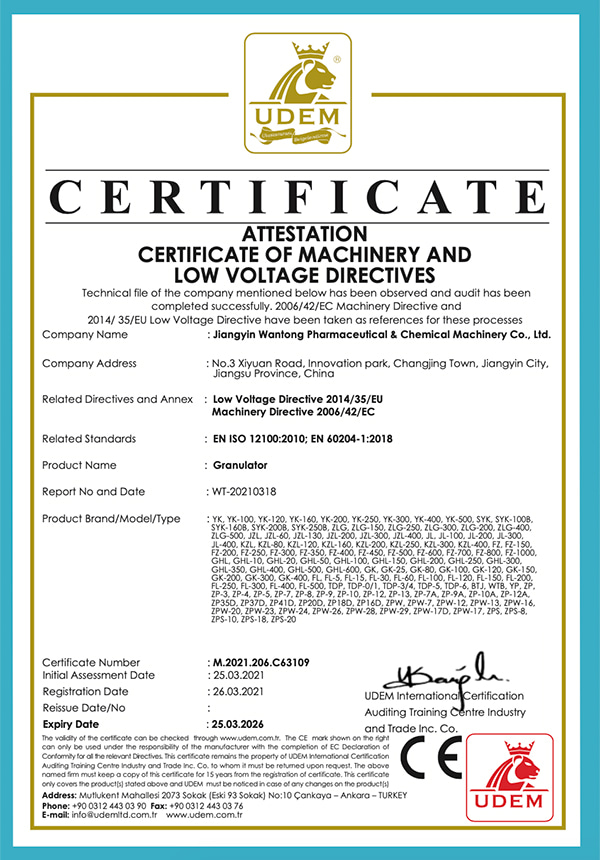V Mixer Manufacturer
-


WLV V Shaped Food Powder Mixer Machine
This v mixer machine is applicable to mix dry powder and granule material for the pharmacy and other relative industries. -

WLV Stainless Steel V Cone Mixer Machine
The stainless steel v cone mixer have many models,the smalles one is WLV-200 mixer,its capacity is 40kg per batch,that means the mixer can m... -


WLV v cone mixer blender machine
This v cone mixer machine is a stainless steel type mixing machine,it can be used in food chemical and pharmaceutical industry. The mixing b...
The V mixer is a basic mixer suitable for small production. This mixer is easy to operate, simple in structure, and easy to clean. The V mixer is suitable for mixing powder and particles after drying or crushing. The V mixer is widely used in the pharmaceutical, food, chemical, and other industries.

About Us
Honor
-
 Honor
Honor -
 CE
CE
News
-
Industry News 2025-12-12
How to Choose the Right Ribbon Blender for Powder and Granule Mixing Choosing a ribbon blender for ...
View More -
Industry News 2025-12-07
Introduction: The Versatile Workhorse of Size Reduction In the vast landscape of industrial processi...
View More -
Industry News 2025-11-24
The Importance of Efficient Mixing in Powder Processing In powder processing, achieving a uniform an...
View More -
Industry News 2025-11-18
A rapid mixer granulator is a high-shear wet granulation system widely adopted in pharmaceutical man...
View More
Industry Knowledge Expansion
How does a V mixer handle materials with different properties?
A V mixer, also known as a twin-shell blender, is designed to handle materials with varying properties effectively due to its specific design and operational features. Here’s how it manages materials with different properties:
Geometric Shape:The V-shaped design of the mixer creates a high degree of inter-meshing of particles as the vessel rotates. This ensures a thorough blend of materials with different sizes, shapes, and densities.
Tumbling Action:The V mixer operates by tumbling the materials back and forth, which promotes a homogenous mix. The constant tumbling action helps to break down agglomerates and ensures that materials with different flow characteristics are evenly distributed.
Axial and Radial Mixing:The V mixer facilitates both axial and radial mixing. Axial mixing occurs along the length of the V, while radial mixing happens as the materials move from the outer walls towards the center. This dual mixing action is particularly effective for blending materials with varied particle sizes and densities.
Variable Speed Control:Many V mixers come with variable speed controls that allow operators to adjust the rotation speed. This is crucial for handling materials with different properties, as some materials may require slower speeds to prevent segregation or degradation, while others might need faster speeds for efficient blending.
Inclined Shell Design:The inclined shell design ensures that gravity assists in the mixing process. As the mixer rotates, materials naturally flow into the junction of the V, where they are subject to continuous mixing. This is beneficial for materials with differing flow properties.
Internal Baffles:Some V mixers are equipped with internal baffles to enhance the mixing process. Baffles can disrupt the flow of materials, ensuring that even cohesive or sticky materials are adequately mixed and do not adhere to the vessel walls.
Adjustable Fill Levels:The fill level of the V mixer can be adjusted to optimize the mixing process. Lower fill levels can help in blending materials with significant differences in bulk density by providing more space for the materials to move and intermix.
Gentle Mixing:The tumbling action of the V mixer is relatively gentle compared to other types of mixers, such as high-speed impellers. This makes it suitable for fragile materials that might break down under more aggressive mixing conditions, as well as for maintaining the integrity of particles with different sizes and shapes.
Material Compatibility:V mixers are constructed from materials that are compatible with a wide range of substances. Stainless steel, for example, is commonly used for its non-reactive properties and ease of cleaning, making it suitable for blending ingredients with different chemical properties.
Discharge Mechanism:The design of the discharge mechanism in a V mixer ensures complete emptying of the mixed materials, preventing any cross-contamination between batches. This is particularly important when handling materials with different properties to ensure a consistent and homogenous blend in subsequent batches.
A V mixer handles materials with different properties through its unique V-shaped design, tumbling action, adjustable speed and fill levels, internal baffles, and gentle mixing process. These features collectively ensure efficient and homogenous blending of diverse materials.



 Español
Español
